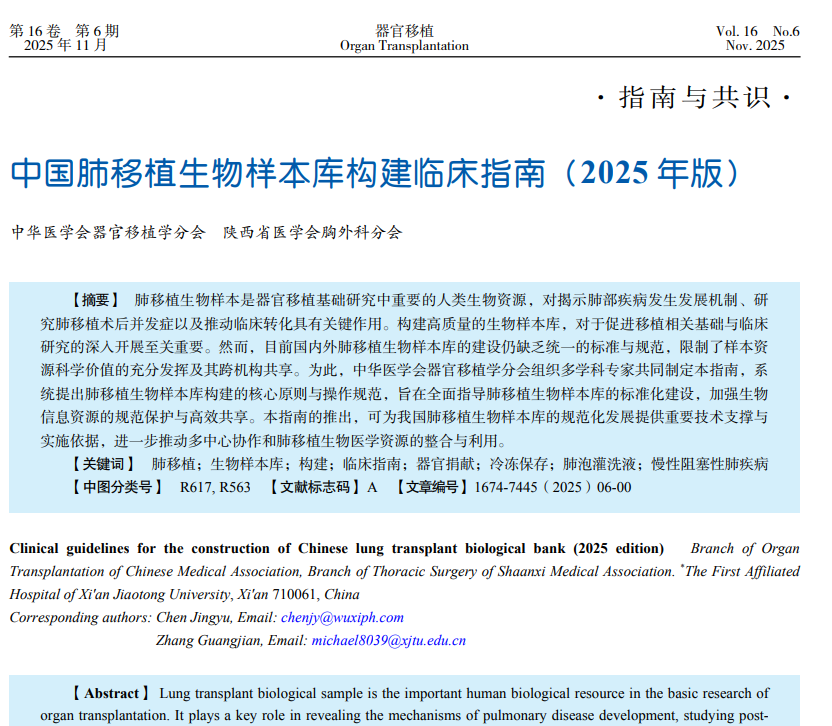Recently, the Clinical Guidelines for the Construction of Chinese Lung Transplant Biological Bank (2025 Edition) (hereinafter referred to as the “Guidelines”) were officially released in the journal Organ Transplantation. These guidelines were initiated by the Branch of Organ Transplantation of Chinese Medical Association and the Branch of Thoracic Surgery of Shaanxi Medical Association, with leading drafting undertaken by the Department of Thoracic Surgery and the Joint Biological Bank Center of the First Affiliated Hospital (FAH) of Xi’an Jiaotong University (XJTU). As China’s first systematic clinical guidelines focusing on the establishment of lung transplant biological banks, this document fills a gap in standardizing practices within the field. It provides authoritative technical support for scientific research and clinical practice related to lung transplantation in China.

Lung transplantation is the only effective treatment for end-stage lung disease. However, post-operative complications such as primary graft dysfunction and chronic graft dysfunction remain major challenges affecting long-term patient survival. A high-quality biological bank serves as a vital foundation for advancing research into the mechanisms of lung transplantation, improving the prevention and treatment of complications, and promoting personalized therapeutic strategies. Nevertheless, the long-standing absence of unified national and international standards for the construction of lung transplant biological banks has hindered the scientific value of sample resources and cross-center sharing.
This guidelines were developed under the leadership of Professor Zhang Guangjian’s team from the Department of Thoracic Surgery at the FAH of XJTU, in collaboration with Professor Wang Yawen from the hospital’s Biological Bank Information Resource Center, Professor Chen Jingyu from Wuxi People’s Hospital, and multidisciplinary experts from several leading lung transplant centers across China. The guidelines systematically address key aspects of building a lung transplant biological bank, such as ethical norms, pre-collection preparations, standardized collection and storage methods for tissue and fluid specimens, quality control systems, and mechanisms for sample utilization. It also provides specific recommendations covering end-to-end management from informed consent to sample distribution.
Emphasizing that lung transplant specimens are “scarce resources”, the Guidelines underscore that their collection, preservation, and use must strictly comply with ethical norms and legal regulations, ensuring comprehensive and traceable informed consent. At the same time, it also defines standardized operational protocols for multiple sample types, such as lung tissue, blood, urine, and bronchoalveolar lavage fluid.
The release of the Guidelines is expected to strongly promote the standardized and normative development of lung transplant biological banks in China, facilitate multicenter collaboration and data sharing, provide solid support for precision medicine research in the field of lung transplantation, and ultimately benefit patients with end-stage lung disease.